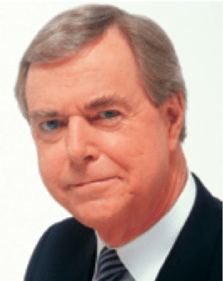Trump Just Made Jim Acosta an Anchorman

Column/Don Newman
President Trump had the credentials of a member of the White House press corps removed this week after the two clashed at an angry press conference the day after the mid-term elections.
The move by the Trump administration means that the reporter, CNN’s Jim Acosta, can no longer enter the White House to do his job. It is the “nuclear option” invoked by a president who has already labeled the press “the enemy of the people” and has a particularly contentious relationship with CNN and Acosta.
Even by the standards of the erratic presidency of Donald Trump, this latest blow-up is unprecedented, although it does recall similar events in Washington and here in Canada.
The comparison isn’t exact, but for Canadian reporters covering Parliament Hill in Ottawa, there are similarities to the situation that developed here after Stephen Harper became prime minister in 2006.
Harper had a generally good relationship with the media covering him when he put together the Canadian Alliance and the Progressive Conservative parties to form the Conservative Party of Canada.
But after he won the 2006 election and formed a minority government, his attitude changed and the relationship quickly soured.
As prime minister, Harper refused to go to the National Press Theatre, where all previous prime ministers going back to Lester Pearson in the 1960s had gone for press conferences.
In the theatre, prime ministerial press conferences are run by the president of the press gallery. Reporters wanting to ask a question put up their hands and go on a list kept by the president, who recognizes the gallery members based on the order in which they raised their hands.
Instead, Harper decided he wanted to meet reporters on Parliament Hill, usually in the foyer of the House of Commons with the chamber behind him and Canadian flags framing the scene. The idea was to make Harper look more “Presidential.”
Instead of the president of the gallery selecting the questioners, a junior functionary in the prime minister’s press office kept a list of potential inquisitors. The unspoken understanding was that reporters deemed unfriendly would never have their names called.
In Ottawa, the members of the press gallery declined to go along with the prime minister’s plan. Harper’s attempt to manage the news didn’t work. The upshot was that after more than a year in a virtual stand-off, Harper finally gave in and went to the Press Theatre and met with reporters.
However, the prime minister and the press continued to have a testy relationship throughout Harper’s nearly 10 years in office.
In Washington, it’s hard to imagine that the media and President Trump could have a relationship that deteriorates even more than it already has. The press routinely points out the exaggerations, untruths and outright lies Trump tells. He calls their reports “fake news.”
In Ottawa, where by longstanding practice and tradition, the press gallery determines who qualifies to be a member and has access to Parliament Hill and its precincts.
In Washington, the White House is not just the office of the president, it is his home. It is protected by the United States Secret Service, a branch of the Treasury Department, which ultimately reports to the president.
That means the Secret Service decides who gets a White House press pass based on the requests of media organizations, not of the White House press office. The absolute number of passes is limited, but access is a numbers game or a security clearance issue, not a question of who the president of the day happens to like.
That is until now. President Trump has directly intervened to bar a reporter, who under the American Constitution has a right to question authority, to block him from doing his job.
I had a White House Press Pass during the 1970s. That was during the Presidency of Richard Nixon and the Watergate scandal. Nixon didn’t have many press conferences, but at one he had a memorable exchange with Dan Rather, then the CBS News White House correspondent and the Jim Acosta of the day.
Nixon supporters pressured CBS to have Rather replaced. But that didn’t happen. And Rather’s White House pass was not interfered with. And as events developed, within a year Nixon had resigned, and over the next six years Rather went on to become the CBS Evening News anchorman, the top job in the network.
Trump’s decision to bar Acosta from the White House will likely have the same effect on his career, and will not have any positive effect for Trump. Reporters at the White House will double down to try and hold the president accountable. Even Trump won’t be able to lift all their passes.
And while reporters should not make themselves part of the story, it is Trump who has propelled Acosta into this one.
Does anyone see a future anchorman here?
Don Newman is Senior Counsel at Navigator Limited and Ensight Canada, and a lifetime member of the Canadian Parliamentary Press Gallery.
